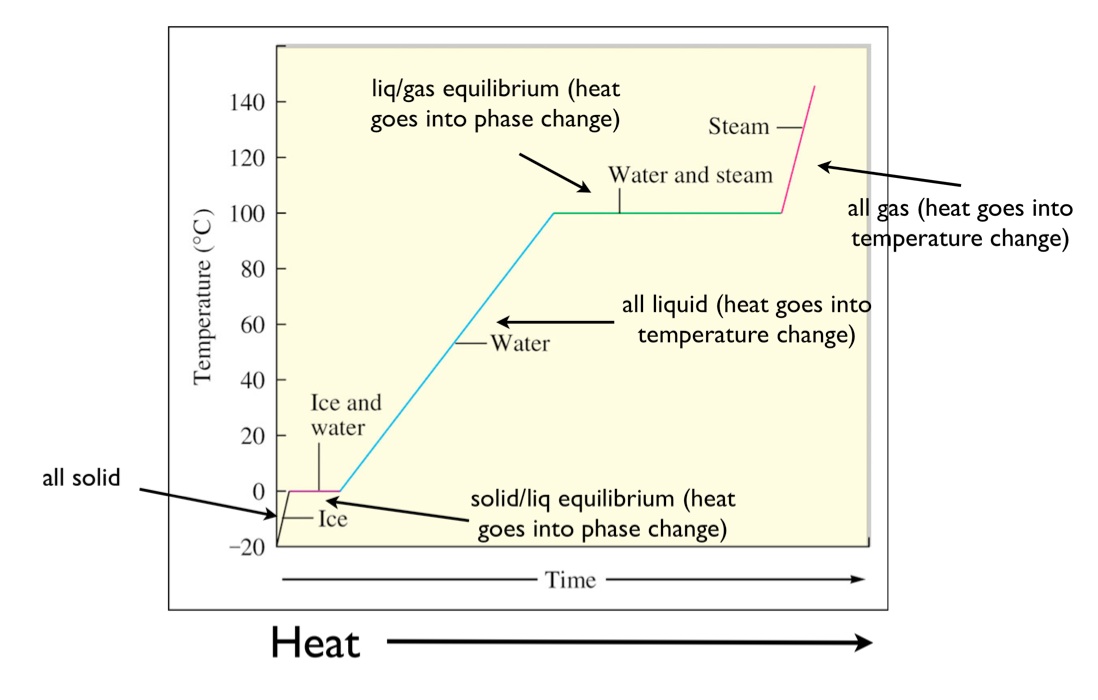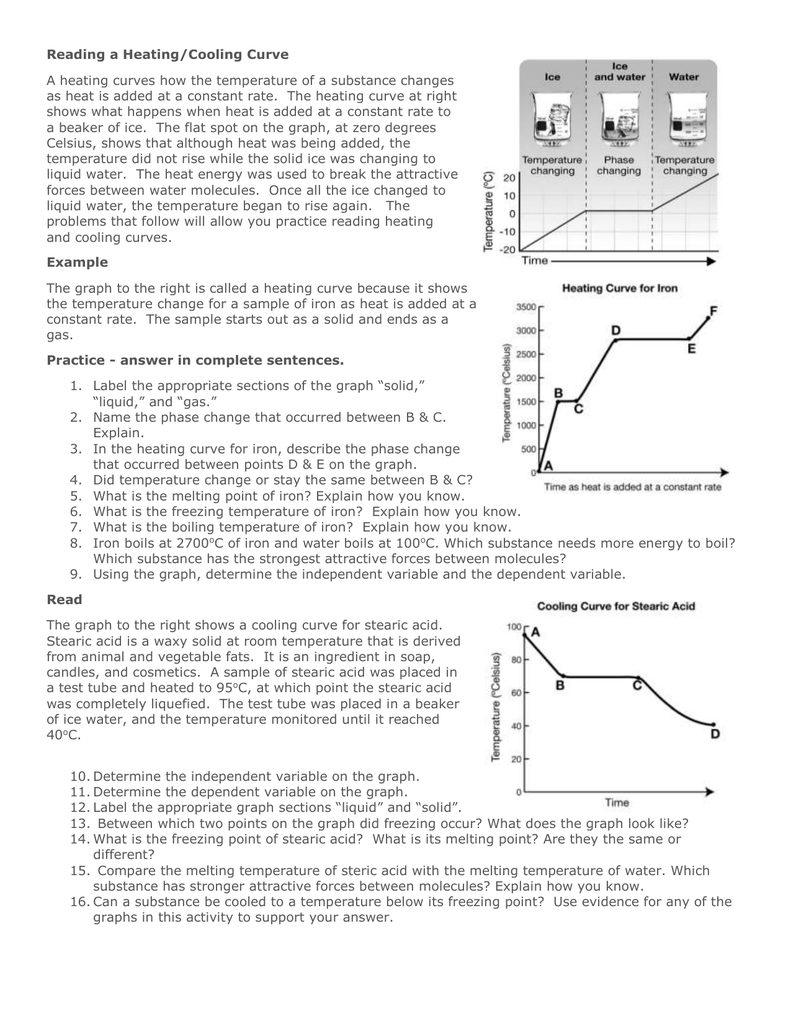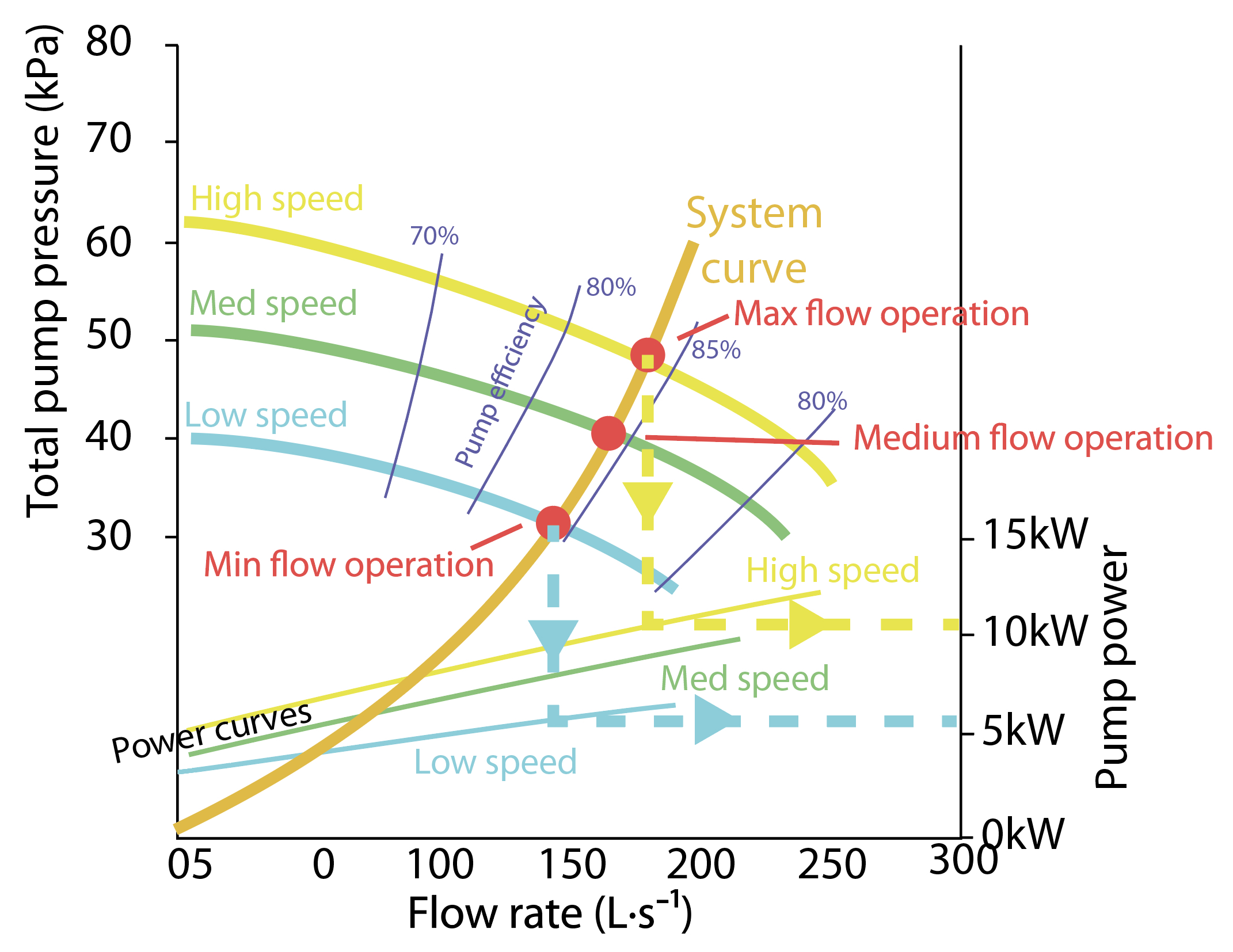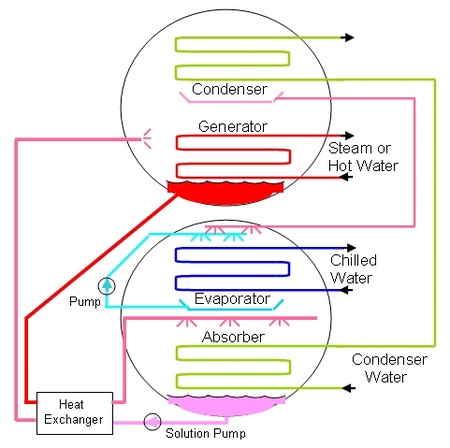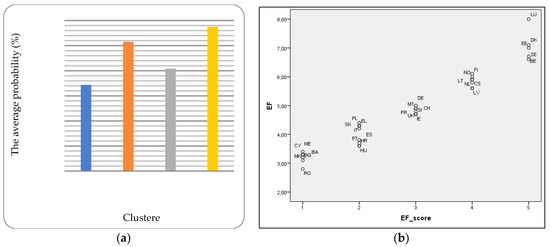Independent Variable Of Heating And Cooling Curve Of Water

Volume is the independent variable.
Independent variable of heating and cooling curve of water. Below is an example of a cooling curve used in castings. For example this is the heating curve for iron a metal that melts at 1538 c and boils at 2861 c. Ensure the thermometer is about 2cm above the bottom of the beaker. A cooling curve is a line graph that represents the change of phase of matter typically from a gas to a solid or a liquid to a solid the independent variable x axis is time and the dependent variable y axis is temperature.
The diagram shows a cooling curve for salol. Different substances have different melting points and boiling points but the shapes of their heating curves are very similar. Notice that the temperature stays the same during the state change freezing and this is the melting point or freezing point of the salol. As heat is steadily added to the ice block the water molecules will begin to vibrate faster and faster as they absorb kinetic energy.
Imagine that you have a block of ice that is at a temperature of 30 c well below its melting point the ice is in a closed container. 5 0 minutes 600 seconds temperature of the room. For water this temperature is 100 c because the boiling point for water is 100 c. The initial point of the graph is the starting temperature of the matter here noted as the pouring temperature.
We have been given a physics assignment about the heating and cooling curves of water. Analysis of a heating curve. We had to heat ice in a hot water bath over a bunsen burner and record the time every 30 seconds until it boiled and then in a freezer the same way it was just a hypothetical experiment. Looking from left to right on the graph there are five distinct parts to the heating curve.
This we would vary by changing the volume of the water each time in the experiment. Temperature is the dependent variable which we would measure the initial temperature and measure each in 30 seconds for 5 minutes in the experiment. Solid ice is heated and the temperature increases until the normal freezing melting point of zero degrees celsius is reached. If you are using a bunsen burner for the heating curve i would put something like.
The dta curve of quartz therefore shows a small sharp endothermic peak that usually occurs close to 573 c on the heating curve because of the reaction α quartz β quartz because of the reversibility of this reaction a comparable exothermic peak will be recorded on the cooling curve if this is determined see curves 1 and 2 fig. Heat up the water. Time interval of cooling. I predict that as the time increases the temperature of the water will increase due to the heat expelled from the bunsen burner or other heat source and for cooling i would put.
Light the bunsen burner and put on a blue flame.


